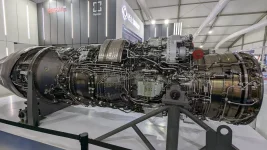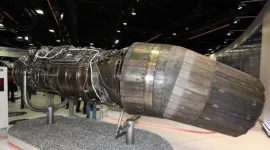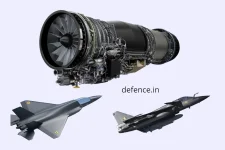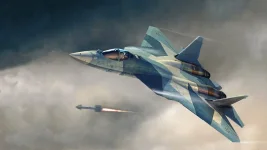- Views: 2K
- Replies: 23
American multinational powerhouse General Electric (GE) has formally expressed strong interest in powering India’s next-generation stealth fighter, the Advanced Medium Combat Aircraft (AMCA).
Citing a deep-rooted partnership with India's defence sector, GE aims to secure the engine contract for the nation's most ambitious indigenous aviation project to date, which is critical for maintaining air superiority in a complex geopolitical region.
In a recent interview, GE Chairman and CEO Larry Culp confirmed the company's ambition to compete for the prestigious contract.
"We are very interested," Mr. Culp stated, referencing the company's ongoing supply of F404 engines for the Tejas Light Combat Aircraft (LCA) as a testament to its central role in India's defence manufacturing ecosystem.
This move signals GE’s intent to deepen its strategic footprint in India, a market it views as vital for both its defence and civil aviation businesses.
The AMCA is a flagship program for India's push towards self-reliance in critical defence technologies. Developed by the Aeronautical Development Agency (ADA) under the Defence Research and Development Organisation (DRDO), the AMCA is a 25-tonne, twin-engine, all-weather stealth fighter.
In March 2024, the Cabinet Committee on Security (CCS) approved ₹15,000 crore for the initial development phase, which includes building five prototypes.
The aircraft is designed to execute a variety of missions, including air dominance, ground attacks, and electronic warfare, with serial production anticipated to commence by 2035.
GE's proposal builds upon its established relationship with Hindustan Aeronautics Limited (HAL), the manufacturer of the Tejas LCA. The company is currently supplying F404 engines for the Tejas Mark-1A variant.
While this partnership has faced headwinds, including significant engine delivery delays due to global supply chain issues, GE has begun to accelerate production. The first of 99 contracted engines was delivered in March 2025, and Mr. Culp has assured that the company is working to resolve the bottlenecks.
This existing industrial collaboration positions GE as a prime candidate for the initial AMCA Mark-1 fleet, which is slated to be powered by GE's more powerful F414 engine.
However, the competition for this crucial contract is intense. GE faces formidable rivals in France's Safran and the United Kingdom's Rolls-Royce. Both European firms are actively engaged in discussions for co-developing a more powerful, next-generation engine for the subsequent AMCA Mark-2 variant.
Rolls-Royce has notably offered to co-create a new 110-kilonewton (kN) engine, promising that India would retain full intellectual property (IP) rights—a key objective for DRDO to achieve genuine technological independence.
Similarly, France is proposing a collaboration based on its experience with the Rafale fighter's M88 engine, offering full technology transfer.
While GE's immediate advantage lies in its proven F414 engine and existing integration with Indian platforms, the company must address concerns over past performance.
The delays in the Tejas engine supply have been publicly noted by Indian Air Force (IAF) Chief, Air Chief Marshal A.P. Singh, who highlighted the impact on operational readiness.
Acknowledging the "super cycle" straining global supply chains, Mr. Culp has emphasized GE's commitment to overcoming these challenges.
Underpinning its bid is a broader, long-term investment strategy in India. GE Aerospace has a significant presence in the country's civil aviation sector, with over 1,400 engines in service and another 2,500 on order.
The company's plans to establish a local Maintenance, Repair, and Overhaul (MRO) facility and recent investments to expand its manufacturing plant in Pune underscore its dedication to the Indian market, reinforcing its case as a strategic partner for the nation's future in the skies.





